It happens every year for me. After a long winter filled with dark and cold days, my mind always starts to dream about blooming flowers, birds singing, mushrooms popping out of the ground, and most of all……Gobbling Turkeys! Spring turkey season is one of my favorite times of the year. By this time, waterfowl season has been out for more than a couple of months and there’s just not much to do during that time between seasons and by April, I’m ready for Turkey Hunting. I’m usually counting down the days to the opener.
Leading up to this highly anticipated event can be fun though. If you’re paying attention you can often times here the Toms gobbling on the roost if you just stop for a second on your way to the work car with your arm full of lunchboxes and coffee cups and laptop……..or whatever it is you carry to your day job.
If you’ve never experienced this anticipation that every turkey hunter can relate to, I highly recommend giving turkey hunting a try. For this post, I thought I would put together some basic thoughts for the beginner turkey hunter. Some of this might even be useful for the old, seasoned turkey hunters too!
The Gun
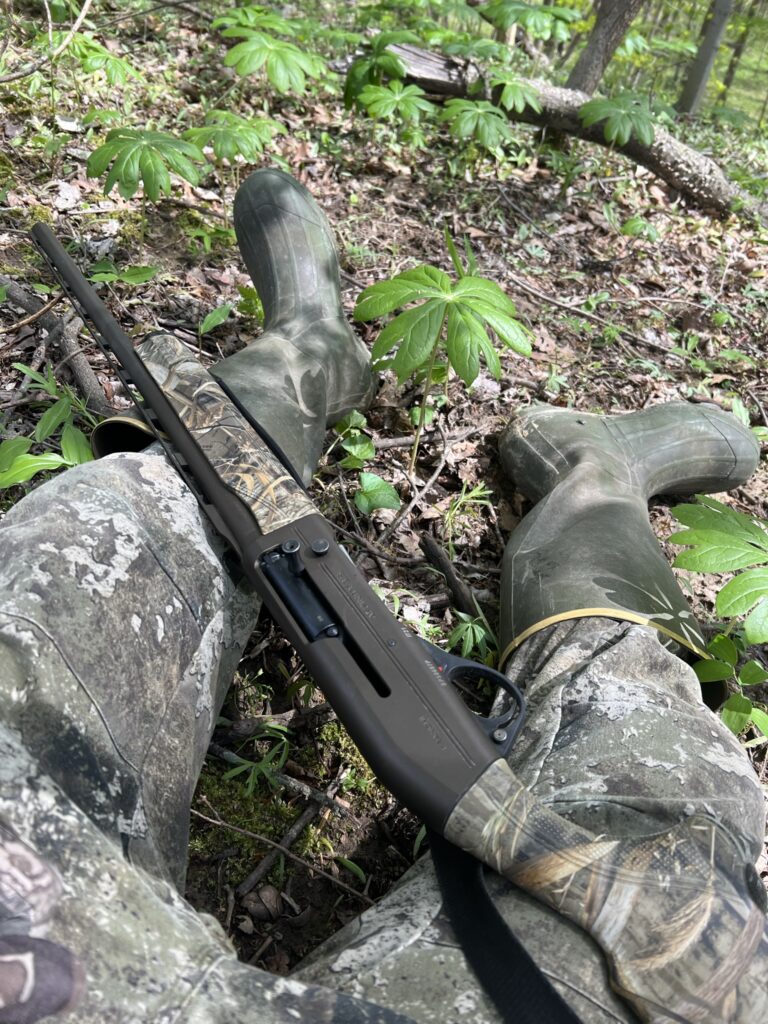
Obviously, if you are going to kill a longbeard, you’re going to have to have a weapon. Although bow hunting for turkeys is becoming more popular, I still prefer a shotgun. I will stick to deer hunting with my bow.
What Guage?
The king of weapons for turkey hunting is the 12 gauge. In recent years with the introduction of Tungsten loads, it’s not uncommon to see guys using a 20 gauge, or even a .410. There’s a huge fad happening right now with people bagging turkeys with a .410 and tungsten shot. It just flat-out hits hard!
But with the ease of purchasing ammo, I would recommend the trusted 12 gauge. I would also recommend purchasing one that is chambered in 3 and ½ inches and of course, buying an extra full choke. There are a ton of these on the market.
What I would not suggest doing, is buying a shotgun that does not accept different chokes. The barrel of the gun should be threaded at the end so different chokes can be screwed into the barrel. A turkey’s head is extremely small and that is what we’re aiming for. Get a full or extra full choke and pattern it to know how your gun and the ammo work through it.
The Gear
Turkey hunting is a relatively low-cost sport, but it will require you to purchase a few items. You’re going to need a way to hide. Turkeys have excellent vision! You’re going to need a way to call them in. And that’s pretty much it. There are several things that you could purchase to improve your chances of success.
Here are a few turkey hunting items that you HAVE to have!
- Camouflage (Everything! …..Don’t forget the face mask and gloves)
- High Quality Ammo
- Calls
- license
For further information on the latest and greatest gear, read my other post here. Must-Have Turkey Hunting Gear.
Here are a few turkey hunting items you could pick up a little later to give you an edge.
- Decoys
- A vest with a large pouch and a built-in seat cushion
- Comfortable Camouflage rubber boots
The Place
Turkeys are primarily woodland creatures. But they love to get out and feed and strut in open fields or meadows. In the Midwest where I’m from you will see large groups of turkeys feeding, breeding, and fighting in farm fields. Feeding, breeding, and fighting are basically all the Toms do!
Turkeys will always roost in trees at night. They usually fly up right at dark and fly down after the sun has risen. These roosting trees are generally large and have many large horizontal branches. Oak trees and pines are ideal for this. If your property has a pine grove near a field, there is a good chance it will have a gobbler in it.
The Plan
When it comes to turkey hunting, planning is everything. Scouting for a few evenings and mornings before you go is always a good idea. Some properties just don’t hold birds. If you have access to several properties, grab the wife and kids in the evening as the sun is getting low and drive around.
Use binoculars to scan farm fields and meadows. If you see a tom strutting with some hens in a field, I guarantee he is going to roost very close to that field. If you have enough time and can park without spooking them, you may even be able to see what tree he flies into. He will generally roost in the same tree, or at least the same area for several days. Chances are, he will be there when you head out with the shotgun.
If you’re a morning person and love to sit and drink coffee outside as I do, head out for a morning sit near a property you have permission to hunt. Get there when it’s still dark and don’t make any noise. If there’s a Tom roosted nearby, he will Gobble on the roost for a LONG time before he flies down. When you’re hunting and you’re right under him, this period may seem like he’s NEVER going to fly down!
If you’re able to pinpoint the location of a morning Gobbler, chances are he will be there when you’re ready to hunt. But good luck sleeping that night before!
Time to Execute
When you have located a Tom and it’s time to go after him, get to the woods long before the sun rises. I would recommend at least 30 minutes before sunrise, but that’s pushing it. Get as close as you can to the tree you think he’s in, but don’t get close enough to spook him.
If there’s a field nearby, you want to be between him and the field. Toms love to fly out of the tree and land in an open field. This won’t apply if you’re hunting in heavy timber, but he will look for a nice open area in the woods.
Be Patient!
When a Tom is on the roost, and he sees the sun coming up he will start to Gobble on his own. He is NOT gobbling at you. If he spotted you, he wouldn’t make a sound. He is doing this to round up hens. He is letting hens in the area know that he is awake and he’s preparing to fly down. Often times you will hear hens clucking and softly yelping. They’re all talking.
As I said before this event will seem to go on forever as the sun comes up. But in reality, it’s usually not more than 20 or 30 minutes. When daylight has fully come you will be sitting there wondering if anything will ever happen. You will be wondering if maybe you should be heading home to prepare lunch, when all of a sudden, a noise that you just have to experience will wake you perk you straight up, and make you shoulder the gun! They are coming down.
Seal the Deal
Now that they are on the ground, it’s up to you to call him in. Act like a hen and hope that somehow, some way, you can convince him to come close enough for a shot. The methods for this will have to be covered in another post. But try not to call until he is on the ground (There are some exceptions) and don’t over-call when he is on the ground.
If you can’t get a Tom to come to you, it’s likely because he has hens already. But don’t worry. After a few hours, the hens will go to their nests, and that Tom will be ready for you. The rest of the day is spent running and gunning, which is what I love! But again, that will have to be another post.
The Skills
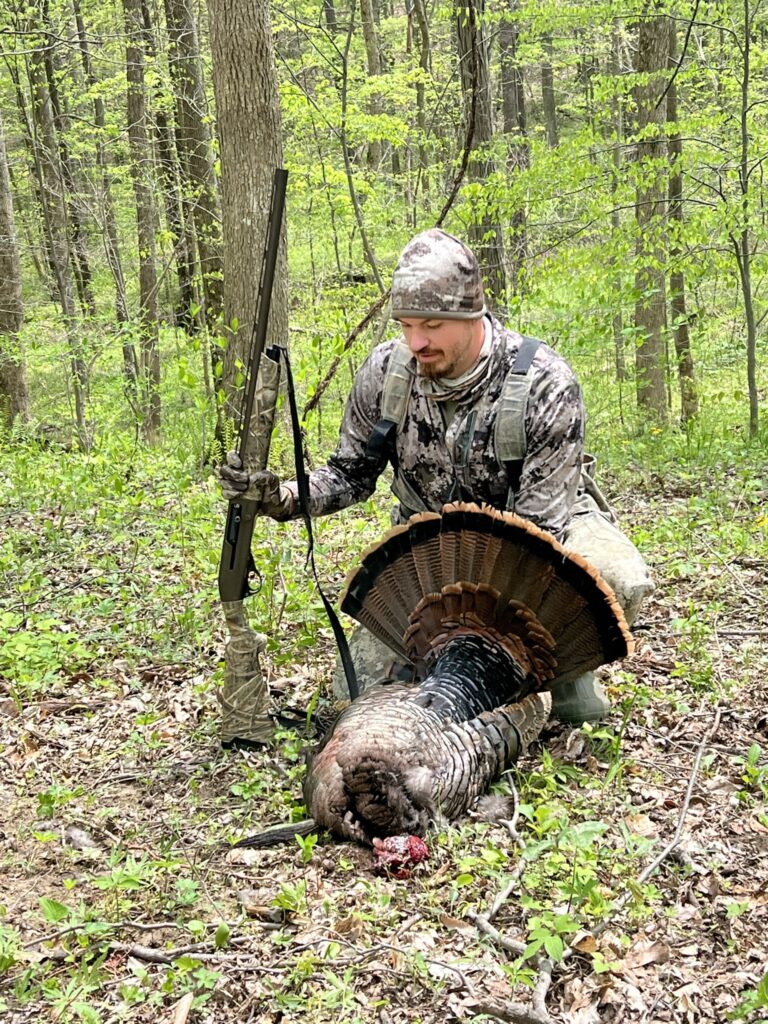
If you are going to be successful turkey hunting, you’re going to have to perfect some skills.
Scouting
We discussed this earlier, but you will have to get good at knowing where to look and what time to start looking. This just comes with practice. Get out there and put in the miles.
Calling
There are a wide variety of turkey calls on the market. To name a few, we have box calls, slate calls, gobble tubes, and diaphragm calls. Slates would be the easiest way to go for a beginner. They consist of a glass or polymer round slate and a wooden or carbon fiber striker. They’re easy to learn and have called many gobblers into my lap. You also need to buy a diaphragm call and learn to use it. It goes in the roof of the mouth and can be used for a variety of sounds and can be done while holding the shotgun on target and bringing that Tom in those last few yards.
It’s also important to learn when to call and when not to, as well as how to make yourself sound natural. Overcalling is the biggest reason for failure! Even a mediocre turkey caller can kill birds if he knows when to sound off and when to shut up.
The Skillet
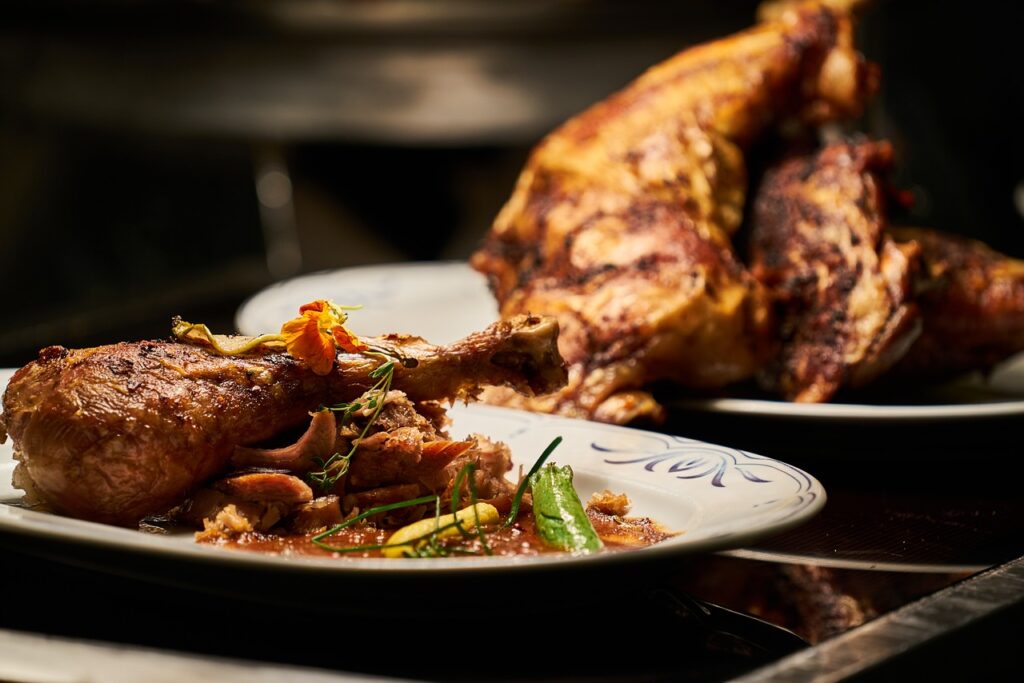
Of course, this should be discussed. And I wouldn’t say that a skillet is the best way to cook a bird, but it went along with the pattern for topics I was going for!
You’ve got your bird, the pictures have been taken, the fan and beard are ready for a display board, and now it’s time to cook the meat and invite your friends over. This is when the real reward for a successful hunt can really sink in.
Time to clean
The first thing I will mention in regards to cooking a wild turkey is don’t just keep the breasts……please. Obviously, the breasts are the largest part of the bird and the most sought-after cut. But the legs and thighs can make excellent dishes. In fact, it’s my favorite part. Turkey breast is turkey breast.
When you clean the bird, lay it belly up and start skinning the bird. Remove the breasts and package them up. But don’t stop there. Skin down a little further to expose the legs and thighs. You will quickly see where to pop the leg joint and cut it with a knife. Then you can push the leg and thigh down to pop the hip joint out and simply cut the thigh meat away from the bird. Now you have a wonderful leg and thigh together. It’s easy! Repeat the process for the other side and discard the carcass that now has NO MEAT ON IT!
Clean the legs and thighs well and put them in a crockpot with seasonings and chicken broth. Cook all day, or until you can grab the bone with tongs and shake the meat off. Throw the two bones away. At this point, you can do one of three things.
Ideas For The Thighs
- Drain the liquid (Use it for something else) and add your favorite barbecue sauce.
- Drain the liquid (Again don’t throw it away) and add garlic powder, onion powder, cumin, and chili powder. Use the meat to make wonderful turkey tacos!
- Leave the liquid and add a little more if needed. Add noodles for delicious turkey noodles. Eat it over mashed potatoes!
With the breasts, my preferred method of enjoying is to cube them up into ¾ inch cubes, bread them up, and fry them. Be careful not to overcook turkey breast. It has no fat and can easily get tough and dry.
I hope the ideas here are enough to inspire you to get out to the woods this spring and hunt down a thunder chicken. The goal would be to bag a Tom by 9 a.m., find two dozen morrell mushrooms on the way out, and catch a limit of crappie after the bird is cleaned and packaged in the freezer. This is called the spring trifecta.
Maybe we should just focus on turkey hunting for now.
For more information that will improve your hunting skills, click here to read my journaling post!
Good luck!

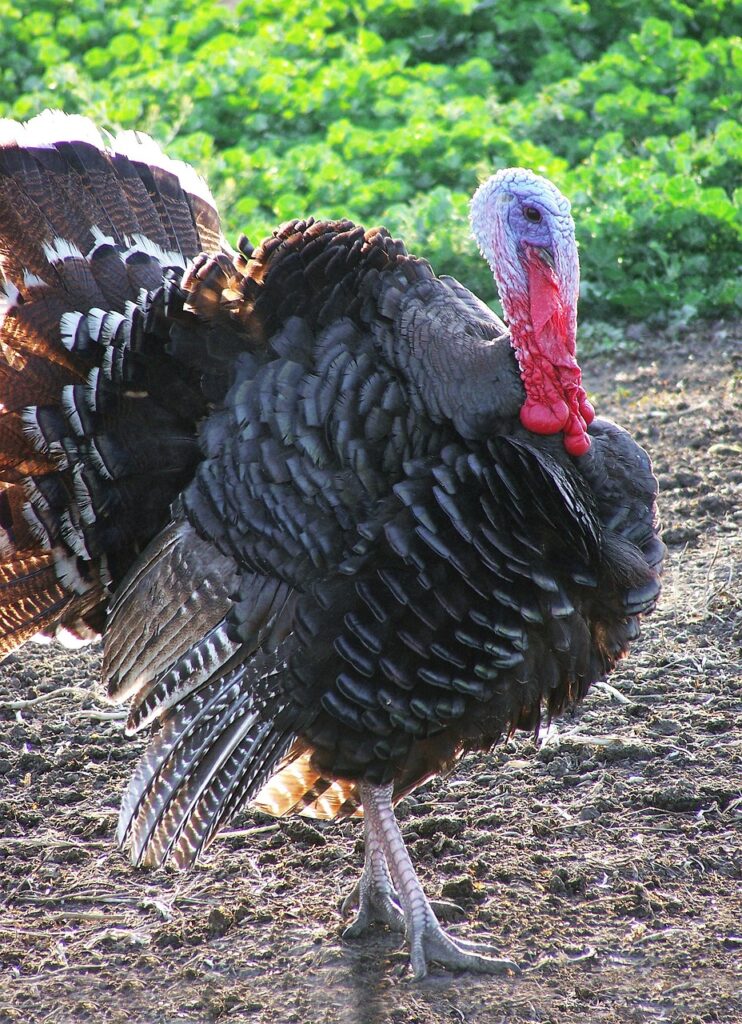
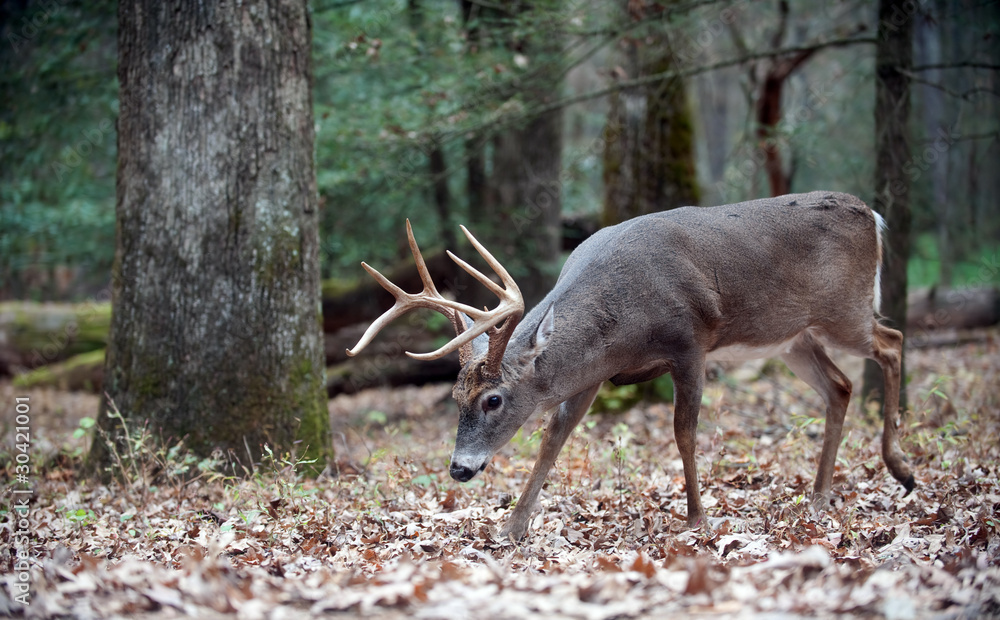

Now I’m hyped up to go after that spring trifecta!! Awesome post, the best turkey crash course I’ve read!